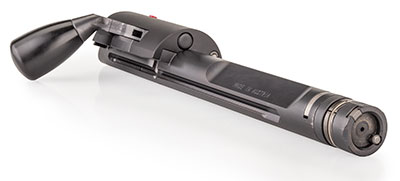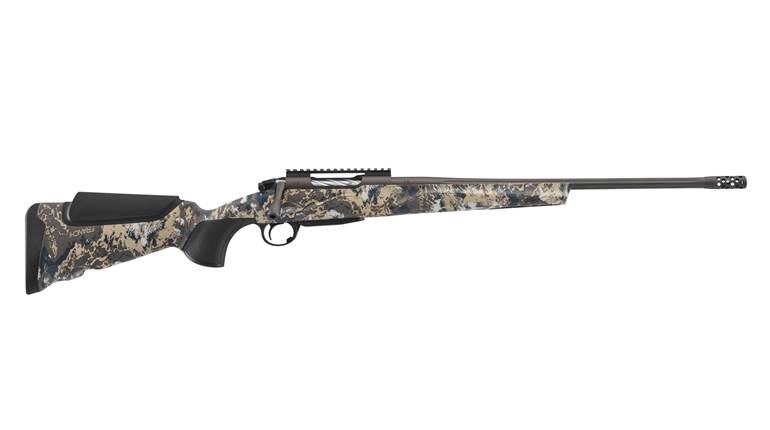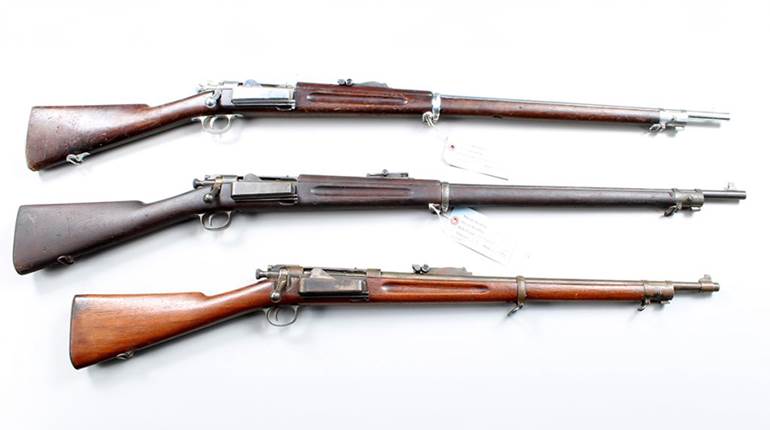
Use of straight-pull bolt-action rifles by hunters in the U.S. has traditionally been limited. These designs are quite popular in Europe, however, and can offer several benefits over traditional turnbolt designs. Among these straight-pull hunting rifles is the RS 14 Evolution Tahr, built by Strasser in Austria. The RS 14 rifle combines modern engineering with traditional design, resulting in a unique and attractive option for hunters who want a straight-pull.
The most notable element of the Strasser is, quite naturally, its bolt assembly. Unlike traditional bolt-actions that use the rotation of the bolt handle to release two or more locking lugs, Strasser rifles are a straight-pull design. While some other straight-pull rifles use a cam to rotate the bolt as the handle is retracted, the Strasser uses an altogether different method.
The Radial Element bolt does not rotate, but, instead, the locking lugs retract back into the bolt body, allowing the release from battery. These four steel lugs interface with a receiver extension that sits just to the rear of the chamber. The barrel does not thread into the receiver, but rather clamps on under significant pressure.

The receiver itself is built from lightweight aluminum, and a Picatinny rail is integrally machined into its top for simple and foolproof scope mounting. Identical ejection ports are present on both sides of the receiver, allowing the rifle to be converted from right-hand to left-hand configuration, or vice versa, and single-loading of the chamber from either side. A spring-loaded plunger-style ejector works in conjunction with a sliding-plate extractor to facilitate the extraction and ejection of spent cases or loaded rounds.
Bilateral buttons on either side of the receiver release the detachable box magazine, which fits flush with the underside of the receiver. The safety is located at the rear of the bolt; sliding the catch upward puts it in the “fire” position, and moving it downward puts the rifle on “safe.” The bolt handle articulates rearward to unlock the bolt from battery, and, if the user wants to cycle the rifle without firing, a button on the safety catch allows the bolt to unlock. A red cocking indicator is visible on top of the bolt body.
Like many European rifles, the Strasser is a take-down design. Though the procedure is a tad complicated if one doesn’t consult the manual, assembly and disassembly can be accomplished quickly and requires no additional tools other than the included 4 mm hex wrench. In order to disassemble the rifle, a plunger on the receiver body is depressed to allow the bolt to slide free. With the bolt removed, a small lever releases the trigger guard, which can be removed from the bottom of the receiver.
The trigger mechanism houses an L-shaped hex wrench, which is used to remove the fore-end screw. A steel rod is encased inside the fore-end and can be used to rotate a lever 90 degrees, which releases the barrel. The process is easier than it sounds, and the result is a very portable rifle ideal for traversing the globe in a compact take-down case. Reversing the procedure assembles the rifle.

Because the barrel can be removed readily, cartridge changes on the Strasser RS 14 rifles are incredibly simple to accomplish. Twenty-two different chamberings are currently offered in three major cartridge categories: Mini, Standard and Magnum. Choices range from .223 Rem. all the way up to .458 Win. Mag., meaning that a single rifle can be used to hunt all of the world’s game.
Users are not restricted to short- or long-action chamberings or magnum or standard bolt faces—every Strasser Evolution can be adapted to fit all 22 cartridges by swapping barrels, bolt heads and magazines. Barrels are available with or without adjustable iron sights. The detachable box magazines hold two rounds of magnum ammunition, and standard and micro chamberings hold three. A larger capacity “driven hunt” magazine is available as an optional accessory—those hold five and six rounds, respectively.
The trigger mechanism on this series of rifles is unique in that it is both adjustable and can also be used for single set use. With the trigger assembly removed from the rifle, a plunger can be moved from one position to another to either lighten or increase the pull weight, with three possible settings available. Our test rifle’s trigger broke at 2 lbs., 14 ozs., on the heaviest setting, 2 lbs., 9 ozs., on the lightest, and a mere 8 ozs. when used with the single set feature engaged.
Several different two-piece stock designs are offered on the Strasser that include highly figured walnut with a cheekpiece, walnut and laminated thumbhole versions as well as a laminated stock with a pistol grip and adjustable cheek piece. Our test rifle was the Tahr model, which ships with the aforementioned adjustable laminated stock.
It came equipped with four QD sling swivel attachment points, pressed checkering on the palmswell and fore-end, and an adjustable comb. Stocks with left-handed cheekpieces are available as well. Fore-ends attach to the receiver securely and allow the barrel to float freely along its length.
The primary advantage of a straight-pull is the speed with which the rifle can be loaded. Europeans hunt lots of driven game, so the ability to quickly cycle the action without losing proper cheekweld is an advantage. Thanks to this system, reloading the Strasser can be accomplished with incredible speed that cannot likely be matched by any other action type, with the obvious exception of autoloading designs.
Our test rifle was chambered in 7 mm Rem. Mag., and we used three factory hunting loads to evaluate the Strasser’s function and accuracy. At first, we were a bit skeptical of the performance. Heat associated with repeated five-round groups didn’t do the rifle any favors with the first load, with some evidence of double-grouping. Three-shot groups would result in one-hole clusters, with the final two shots opening things up considerably. Then we switched loads and those problems disappeared; with the other two brands tested, accuracy ranged from good to great.

The engineering on the RS 14 Evolution Tahr is impressive, the construction is solid and the lines are pleasing. The Strasser deviates from the classic American style of hunting rifles, but in doing so offers some impressive features; its take-down and multi-chambering abilities are both attractive attributes for the traveling hunter.






































